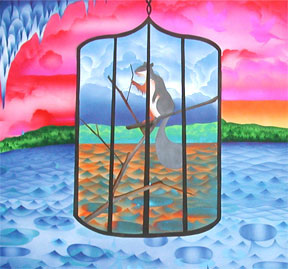
Saturday, May 26, 2007
Willem Jan Neutelings and Michiel Riedijk
Wow. I want to work somewhere where the departments are labeled with references to Dante's Divine Comedy. Dang. From today's New York Times.


Tuesday, May 22, 2007
The Abyss
There's a great slide show over at the New York Times today that shows deep sea creatures that have never before been photographed underwater. They're collected in a book called The Deep: The Extraordinary Creatures of the Abyss by Claire Nouvain.

The images are amazing. They're like something out of Haeckel.


The New York Times article mentions William Beebe, who was a naturalist who first described some of these creatures. People thought he was making it all up, as you would, if someone described, say, this guy.

This is a dumbo octopus from the Monterey Bay ocean floor.
Beebe encouraged people to join the "Society of Wonders" he visited with his home made diving helmet. He wanted other people to see his "Helmet Kingdom."

That's him in the home-made helmet. His interest in exploring the depths of the ocean prompted the development of the Bathysphere, which is a pretty amazing story in itself.
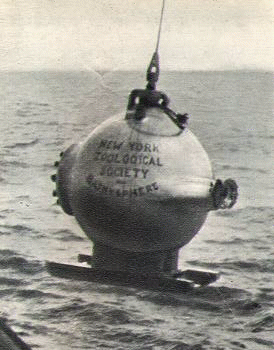
Beebe put out a call to inventors to work on something that would be capable of withstanding the pressures of the ocean depths. He received lots and lots of crackpot plans from people around the country at his office at the New York Zoological Society. By the time Otis Barton, who had a good plan, got to him, it was necessary for Barton to arrange a special introduction to Beebe in order to overcome Beebe's assumption that he was just another crackpot. Beebe had ignored his letters. Barton had to offer to fund the building of the bathysphere himself in order to get Beebe's support. Luckily, Barton was a millionaire.

The introduction worked: Beebe signed on. This picture shows Beebe and Otis Barton with the bathysphere. Beebe is on the left. Barton has the jaunty hat.

The bathysphere had a palm leaf fan inside it for air circulation and Beebe and Barton had to squish themselves in through the small portholes head first. The windows were made of quartz.

Beebe and Barton made 35 dives, and broke many, many deep water diving records. One of their trips, in 1934, got to as low as 3,028 feet below sea level. The two of them got giddy from too much oxygen, were nearly decapitated by high pressure water leaks, and were recorded talking on the telephone the whole time. The rule was that if they didn't talk for five seconds at a time they were to be pulled back up to the surface.

Beebe wrote: "The only other place comparable to these marvelous nether regions must surely be naked space itself, out far beyond atmosphere, between the stars, where sunlight has no grip upon the dust and rubbish of our planetary air, where the blackness of space, the shining planets, comets, suns and stars must really be closely akin to the world of life as it appears to the eyes of an awed human being in the open ocean a half mile down." 2

This is the Ping-Pong Tree Sponge, from Claire Nouvain's book.
Beebe took a fair amount of flack for writing popular books. A scientist at the time said that Beebe's descriptions of the lights he described seeing on the fish he observed from the bathysphere "may be a 'phosphorescent coelenterate whose lights were beautified by halation in passing through a misty film breathed onto the quartz window by Mr. Beebe's eagerly appressed face."1
He's a fun writer. His article "A Dark and Luminous Blue" describes a deep sea diving trip in the Bathysphere. I've quoted some of this article below.

Beebe and Barton's Bathysphere telephone was connected to Gloria Hollister, Beebe's research associate. She was the first woman to go in the Bathysphere: Beebe surprised her with a trip on her 30th birthday. Her alumni magazine is very proud, and they should be- two years after Beebe's record dive she was leading expeditions into the interior of British Guiana for the New York Zoological society.

The story of the development of the Bathysphere is really fascinating: you can read about it at this great website, and there's a book about it that looks pretty fabulous too: Descent: The Heroic Discovery of the Abyss by Bradford Matsen.
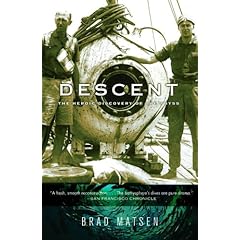
1. "Natural Man," by Robert Henry Welker, p.139, quoted from this website, where I got most of my information.
2. The National Geographic Magazine, "A Half Mile Down," Dec. 1934, p. 704, quoted from the website above.

The images are amazing. They're like something out of Haeckel.


The New York Times article mentions William Beebe, who was a naturalist who first described some of these creatures. People thought he was making it all up, as you would, if someone described, say, this guy.

This is a dumbo octopus from the Monterey Bay ocean floor.
Beebe encouraged people to join the "Society of Wonders" he visited with his home made diving helmet. He wanted other people to see his "Helmet Kingdom."

That's him in the home-made helmet. His interest in exploring the depths of the ocean prompted the development of the Bathysphere, which is a pretty amazing story in itself.

Beebe put out a call to inventors to work on something that would be capable of withstanding the pressures of the ocean depths. He received lots and lots of crackpot plans from people around the country at his office at the New York Zoological Society. By the time Otis Barton, who had a good plan, got to him, it was necessary for Barton to arrange a special introduction to Beebe in order to overcome Beebe's assumption that he was just another crackpot. Beebe had ignored his letters. Barton had to offer to fund the building of the bathysphere himself in order to get Beebe's support. Luckily, Barton was a millionaire.

The introduction worked: Beebe signed on. This picture shows Beebe and Otis Barton with the bathysphere. Beebe is on the left. Barton has the jaunty hat.

The bathysphere had a palm leaf fan inside it for air circulation and Beebe and Barton had to squish themselves in through the small portholes head first. The windows were made of quartz.

Beebe and Barton made 35 dives, and broke many, many deep water diving records. One of their trips, in 1934, got to as low as 3,028 feet below sea level. The two of them got giddy from too much oxygen, were nearly decapitated by high pressure water leaks, and were recorded talking on the telephone the whole time. The rule was that if they didn't talk for five seconds at a time they were to be pulled back up to the surface.

Beebe wrote: "The only other place comparable to these marvelous nether regions must surely be naked space itself, out far beyond atmosphere, between the stars, where sunlight has no grip upon the dust and rubbish of our planetary air, where the blackness of space, the shining planets, comets, suns and stars must really be closely akin to the world of life as it appears to the eyes of an awed human being in the open ocean a half mile down." 2

This is the Ping-Pong Tree Sponge, from Claire Nouvain's book.
Beebe took a fair amount of flack for writing popular books. A scientist at the time said that Beebe's descriptions of the lights he described seeing on the fish he observed from the bathysphere "may be a 'phosphorescent coelenterate whose lights were beautified by halation in passing through a misty film breathed onto the quartz window by Mr. Beebe's eagerly appressed face."1
He's a fun writer. His article "A Dark and Luminous Blue" describes a deep sea diving trip in the Bathysphere. I've quoted some of this article below.
Lights now brightened and increased, and at 1100 feet I saw more fish and other organisms than my prebathysphere experience had led me to hope to see on the entire dive. With the light on, several chunky little hatchet-fish approached and passed through; then a silver-eyed larval fish two inches long; a jelly; suddenly a vision to which I can give no name, although I saw others subsequently. It was a network of luminosity, delicate, with large meshes, all aglow and in motion, waving slowly as it drifted. Next a dim, very deeply built fish appeared and vanished; then a four-inch larval eel swimming obliquely upward; and so on. This ceaseless telephoning left me breathless and I was glad of a hundred feet of only blue-blackness and active sparks. . . .
Suddenly in the distance a strong glow shot forth, covering a space of perhaps eight inches. Not even the wildest guess would help with such an occurrence. Then the law of compensation sent, close to the window, a clear-cut, three-inch, black anglerfish with a pale, lemon-colored light on a slender tentacle. All else my eye missed, so I can never give it a name.
One great source of trouble in this bathysphere work is the lag of mind behind instantaneous observation. For example, at 1300 feet a medium-sized, wide-mouthed angler came in sight, then vanished, and I was automatically describing an eight-inch larval eel looking like a transparent willow leaf, when my mind shot back to the angler and demanded how I had seen it. I had recorded no individual lights on body or tentacle, and now I realized that the teeth had glowed dully, the two rows of fangs were luminous. It is most baffling to gaze into outer darkness, suddenly see a vision, record the bare facies--the generality of the thing itself--and then, in the face of complete distraction by another spark or organism, to have to hark back and recall what special characters escaped the mind but were momentarily etched upon the retina. On this point I had thoroughly coached Miss Hollister at the other end of the telephone, so I constantly received a fire of questions, which served to focus my attention and flick my memory. Again and again when such a question came, I willfully shut my eyes or turned them into the bathysphere to avoid whatever bewilderment might come while I was searching my memory for details of what had barely faded from my eye. . .
At 2000 feet I made careful count and found that there were never less than ten or more lights--pale yellow and pale bluish--in sight at any one time. Fifty feet below I saw another pyrotechnic network, this time, at a conservative estimate, covering an extent of two by three feet. I could trace mesh after mesh in the darkness, but could not even hazard a guess at the cause. It must be some invertebrate form of life, but so delicate and evanescent that its abyssal form is quite lost if ever we take it in our nets. Another hundred feet and Mr. Barton saw two lights blinking on and off, obviously under control of the fish. . . .
At 2300 some exclamation of mine was interrupted by a request from above to listen to the tug's whistles saluting our new record, and my response was, ``Thanks ever so much, but take this: two very large leptocephali have just passed through the light, close together, vibrating swiftly along; note--why should larval eels go in pairs?" And with this the inhabitants of our dimly remembered upper world gave up their kindly efforts to honor us. On down we went through a rich, light-filled 2400, and to rest at 2500 feet, for a long half hour. . . .
The several nodes of high lights of which I have written occur on every descent, but there is in addition a compounding of sensations. At first we are quick to see every light, facile in sending up notes, but when we have used up most of our adjectives it is difficult to ring changes on sparks, lights, and darkness. More and more complete severance with the upper world follows, and a plunging into new strangenesses, unpredictable sights continually opening up, until our vocabularies are pauperized, and our minds drugged.
Over two hours had passed since we left the deck and I knew that the nerves both of my staff and myself were getting ragged with constant tenseness and strain. My eyes were weary with the flashing of eternal lights, each of which had to be watched so carefully, and my mind was surfeited with visions of the continual succession of fish and other organisms, and alternately encouraged and depressed by the successful or abortive attempts at identification. So I asked for our ascent.

Beebe and Barton's Bathysphere telephone was connected to Gloria Hollister, Beebe's research associate. She was the first woman to go in the Bathysphere: Beebe surprised her with a trip on her 30th birthday. Her alumni magazine is very proud, and they should be- two years after Beebe's record dive she was leading expeditions into the interior of British Guiana for the New York Zoological society.

The story of the development of the Bathysphere is really fascinating: you can read about it at this great website, and there's a book about it that looks pretty fabulous too: Descent: The Heroic Discovery of the Abyss by Bradford Matsen.

1. "Natural Man," by Robert Henry Welker, p.139, quoted from this website, where I got most of my information.
2. The National Geographic Magazine, "A Half Mile Down," Dec. 1934, p. 704, quoted from the website above.
Sunday, May 06, 2007
Zoe Strauss Under I-95
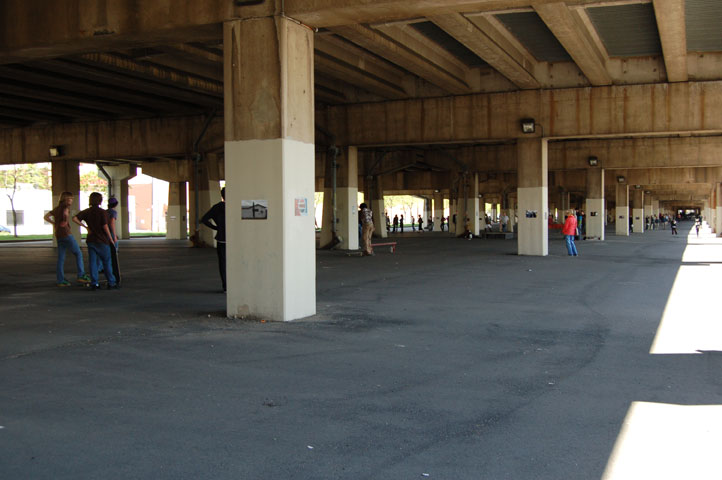
I went to see Zoe Strauss' massive installation under i-95 yesterday. She does a show under the freeway every year, but I've always missed it for one reason or another. I'm so glad I finally made it.
Zoe Strauss takes photographs of gritty Philly life, and the friend I went to the show with was worried that her I-95 event was going to be like some freaky scene from the movie Pecker. It wasn't an unreasonable analogy.
Zoe, like the hero in Pecker, photographs street life in a city that seems quaint to New York. She's not in Baltimore, but her pictures show Philadelphia, among other things, in all its poverty and roughness. It's not sweet work, but it's funny and humane and absurd, and it's very Philly.

I'm not sure how to explain what I mean by that, but I keep flashing back to a memory I have of a student talking to Zoe about her work this fall. One of my students, a smart, very political guy who I imagine has a more than usually vivid acquaintance with the implications of empty pockets, piped up.
"So I've heard that you COULD sell your work for a whole bunch of money, but you choose not to. Could you EXPLAIN that?"
She did her best. She said that she was going to stop selling to people at reasonable prices because she was a big sellout. He nodded, and then she explained. "No, I'm joking. I want to make art that I can afford. I might go to one of those big galleries, I don't know. But I want to make art that the people in my photos can buy."

It's weird to think about the people at the Whitney Biennial looking at her work. The Whitney is a hell of a white box, and one can imagine pictures of the Philadelphia poor turning into something else- some hideous kind of lawn-jockey accessory in the face of all that big museum money.

She's in a tough position, because her work, and what she's trying to do, is absolutely noble. But the art world isn't. It's partly noble. I hoped that her work would always be able to transcend the hype that gathered around it. But I wasn't sure.
When my friend and I got to the I-95 show, we were completely reassured. It couldn't have been less like a John Waters movie. Partly it was because her work is too good, and partly it was because the space is too large.
The place she does the shows, under the freeway behind a Target, is HUGE. She said in her talk that she'd decided she'd do shows down there for ten years. Until one sees the space one has no idea how insane an undertaking that is- it's like committing to fill half a football field with art every year. She had a million photos in there. And they're all really interesting. The size of the space meant that it was impossible to have any kind of art-scenester thing going in there, and that lots of different kinds of people could and did view the work without feeling uncomfortable.
Plus she gave it all away at the end of the show.
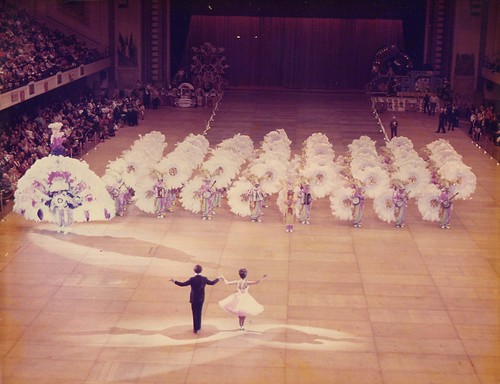
What a freaking genius.
Thursday, May 03, 2007
One has to earn the sparkling green thumbnail...
The New York Times today has an article about Patrick Blanc, a botanist who invented the plant wall. It's a structure of steel mesh and non-biodegradable felt that allows low light plants to grow vertically inside or outside in low light. The article has pictures of his house, which sounds like an incredible frog palace, but I prefer his large scale work, like the outside of the Musee de Quay Branlee in Paris, below.



This is Les Halles, in Avignon.

Below is a wall he made in the 21st Century Museum of Contemporary Art in Kanazawa, Japan.

He's done a million things, and they're all beautiful. There's a great Flash slide show of his work here.
His house is pretty good too, though.


All of which, in my opinion, earns him the right to look like this.




This is Les Halles, in Avignon.

Below is a wall he made in the 21st Century Museum of Contemporary Art in Kanazawa, Japan.

He's done a million things, and they're all beautiful. There's a great Flash slide show of his work here.
His house is pretty good too, though.


All of which, in my opinion, earns him the right to look like this.

Subscribe to:
Posts (Atom)
